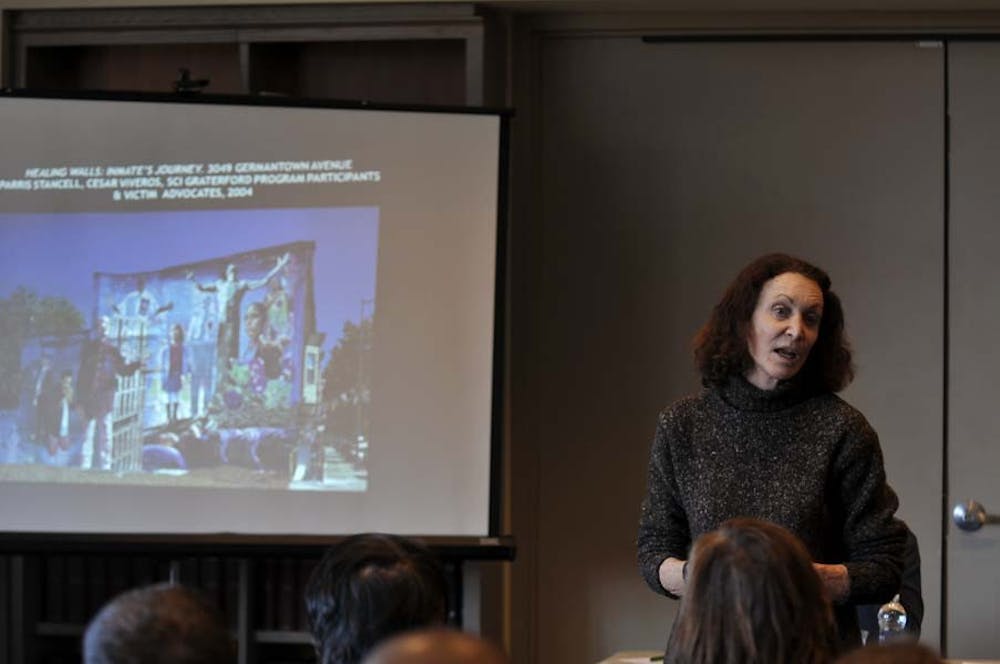
“Art heals, art unites and art changes minds in a convincing fashion. Art drives the agenda. Great art is never silent, can’t be ignored and serves poorly the status quo,” said Jane Golden, executive director of the Philadelphia Mural Arts Program.
Last Friday, the Division of Public Safey hosted Golden for a lunchtime discussion, titled “Art and Criminal Justice: The Intersection of Faith,” at Penn Hillel. She was joined by Vice President of Public Safety Maureen Rush and University Chaplain Chaz Howard.
Golden has long been a driving force behind the Mural Arts Program. She has overseen the organization from its growth as a small city agency into the nation’s largest mural program and a model for community development across the country.
Under her direction, the program has created more than 3,000 landmark works of public art through innovative collaborations with community- based organizations, nonprofits, schools, city agencies, the private sector and philanthropies.
“[Mural Arts’] program mission involves uniting communities and artists through a collaborative process, rooted in the traditions of mural-making, to create art that transforms public spaces and individual lives,” Golden said.
Specifically, Mural Arts has become a national leader in arts in criminal and restorative justice. The program offers educational workshops in local prisons and rehabilitation centers using the restorative power of art to break the cycle of crime and violence in communities.
“So many people within the community are talented and are unrecognized,” Golden said. “The Mural Arts Program works because it provides these individuals a life line … art can serve as their way out.”
A popular component of the program is that it teaches mural-making programs to adult men and women where inmates receive a stipend to create murals for schools and community centers throughout Philadelphia. Mural Arts also lends opportunities for individuals recently released from prison through its re-entry program.
In addition to Golden, Friday’s event also included a discussion with Michael Wittington, who was in the criminal justice system for his involvement in a 2003 shooting.
Wittington provided personal insights on the influence that the program has had on his life.
“This program offered me more than I could ever ask for,” he said. “It provided me with a source of escapism from the harsh realities I experienced on an everyday basis. More importantly it offered me a second chance … a second chance at life.”
Wittington added that the program helped him make amends with his past wrongdoings and bring restorative justice to his community. Due to his dedication, the program has given him work release, in which he was able to completely turn his life around. He now works for the program as a mentor for other young individuals experiencing similar circumstances.
Keeping one foot in the community, Golden said, helped Mural Arts become a vehicle for positive change too.
“Policy change successfully occurs when change is initiated from the ground up,” she said.
Above all, though, Golden said that Mural Arts’ success is due in large part to its faith in three simple words — “Art Saves Lives.”
This article has been revised to clarify that the Division of Public Safety hosted the discussion, not Hillel.
The Daily Pennsylvanian is an independent, student-run newspaper. Please consider making a donation to support the coverage that shapes the University. Your generosity ensures a future of strong journalism at Penn.
DonatePlease note All comments are eligible for publication in The Daily Pennsylvanian.





